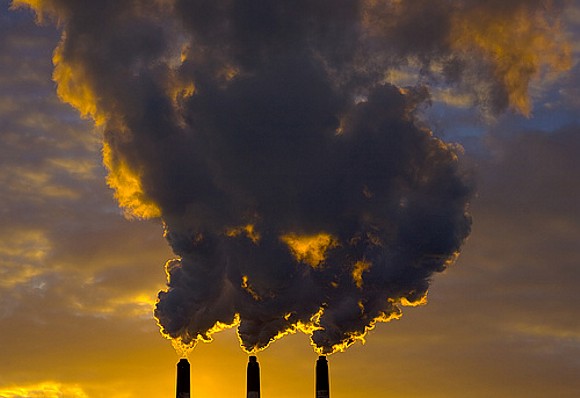7 Million Deaths Linked To Air Pollution In 2012 Says New Report By World Health Organization
 April 11, 2014
April 11, 2014  Kyriaki (Sandy) Venetis
Kyriaki (Sandy) Venetis The United Nations’ World Health Organization (WHO) just released a shocking report linking severe air pollution – both indoor and outdoor combined – to about seven million deaths across the globe in 2012.
“This finding more than doubles previous estimates and confirms that air pollution is now the world’s largest single environmental health risk,” said WHO.
 In the case of outdoor air pollution, a report by the UN’s World Health Organization (WHO) estimated that “there were 3.7 million deaths in 2012 from urban and rural sources worldwide.” Photo courtesy of Clear The Air New Blog.
In the case of outdoor air pollution, a report by the UN’s World Health Organization (WHO) estimated that “there were 3.7 million deaths in 2012 from urban and rural sources worldwide.” Photo courtesy of Clear The Air New Blog.
The health organization said that the new data shows “a strong link between both indoor and outdoor air pollution exposure and cardiovascular diseases, such as strokes and ischaemic (coronary) heart disease, as well as between air pollution and cancer.
“This is in addition to air pollution’s role in the development of respiratory diseases, including acute respiratory infections and chronic obstructive pulmonary diseases (COPD).” The estimates were based on WHO mortality data from 2012 associated with conditions related to exposure to air pollution.
Looking at indoor air pollution worldwide, the health organization estimated that indoor air pollution was linked to about 4.3 million deaths in 2012, which was related to “households cooking over coal, wood, and biomass stoves.”
 Cooking on a traditional wood burning stove in India. Photo courtesy of UK Biochar Research Centre.
Cooking on a traditional wood burning stove in India. Photo courtesy of UK Biochar Research Centre.
The greatest number of deaths in the world related to indoor air pollution occurred in Southeast Asia and the Western Pacific.
India has been “shouldering the biggest burden,” said WHO, which estimates that “millions of women in rural India spend several hours every day cooking meals in smoky ovens or open fires within their homes.”
The health organization estimates these women “and the young children around them are the first victims of smoke-related acute and chronic respiratory and cardiovascular illnesses.”
In 2012, WHO estimated that “there were close to 1.7 million premature deaths attributed to household air pollution from cooking in the Southeast Asia region.”
A major barrier to improve health in the region is convincing women to abandon traditional cooking practices that have been passed down for generation. The problem, according to WHO, is that many of these women do not realize that the smoke emitted from the traditional clay or brick stoves called chulhas are putting their families “lives in danger.”
Dr. Kirk Smith, a professor of global environmental health from the University of California at Berkley, who in the 1970s began the studying of the effects of air pollution from open biomass cook stoves, said that, “Having an open fire in your kitchen is like burning 400 cigarettes an hour.”
Though as said, cultural preferences are hard to change. WHO estimates that about “700 million people in India still rely on solid fuels and traditional cook stoves for domestic cooking despite their negative impact on peoples’ health.”
The health organization estimates that “this figure has remained relatively constant over the last three decades despite efforts to improve access to cleaner energy sources such as gas and electricity in rural areas.”
India is not the only place in the world were indoor air pollution is a severe problem leading to death relating to stroke, heart disease, and respiratory complications. The Western Pacific is the second largest region in the world to experience indoor air pollution related deaths, with an estimated 1.6 million deaths.
Other WHO estimates of deaths related to indoor air pollution include: almost 600,000 deaths in Africa, 200,000 deaths in the eastern Mediterranean region, 99,000 in Europe, and 81,000 in the Americas. The health organization estimated that the remaining 19,000 deaths occurred in high income countries.
In an effort to reduce illnesses related to indoor air pollution, WHO said that it is working with countries to raise awareness and develop initiatives to address the health impacts. As part of the effort, the health organization said that it is providing assistance with the UN Secretary General’s Sustainable Energy for All (SE4ALL) and the Global Alliance for Clean Cookstoves.
Dr. Carlos Dora, with the WHO Department of Public Health, elaborated on some of the organization’s efforts, saying, “We are currently completing new indoor air quality guidelines for household fuel combustion.
“These guidelines will provide decision makers in countries and other partners with technical recommendations regarding fuels, cook stoves, and household energy technologies” to provide the cleanest and best performing options for protecting health.
As part of increased awareness, WHO said that India has already started revising national standards for cook stoves under the leadership of the Ministry of New and Renewable Energy. New stoves still need to be tested and show proof that they are less polluting and more efficient than existing traditional and improved models.
In the 1980s and 1990s, India focused on promoting improved cook stoves with enhanced energy efficiency, but “not necessarily on reducing emissions or exposure to smoke,” said WHO.
Reader comments and input are always welcomed!

Reader Comments